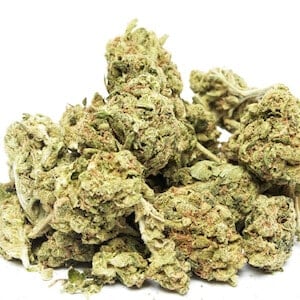In addition to their use as mind-altering drugs, cannabis plants have been used to produce hemp fiber, hemp oils, medicines, and other products.

TheCannabisgenus includes a group of hardy, versatile plants:Cannabis sativa, Cannabis indica,andCannabis ruderalis. In addition to their use as mind-altering drugs, these plants have been used to produce hemp fiber, hemp oils, medicines, and other products. Yet cannabis is still best known for its psychoactive properties, which include relaxation, giddiness, euphoria, and drowsiness.Cannabis abuse can also trigger a host of negative psychological effects, including anxiety, paranoia, memory loss, and psychosis.
With current political movements to legalize marijuana and legitimize the drug for its medicinal uses, cannabis use has become more widely accepted in the United States and worldwide. TheWorld Health Organizationreports that cannabis use has grown more rapidly in recent years than opiate or cocaine abuse, with approximately 150 million people using various forms of cannabis around the world. While the drug is considered relatively “safe” compared to hard drugs like heroin or meth, research shows that cannabis abuse can cause long-lasting damage to cognitive function, psychological health, and physical well-being.
What Forms Does Cannabis Take?
- Herbal marijuana:“Marijuana” is a Spanish word that refers collectively to the parts of the cannabis plant, including the stems, leaves, buds, flowers, and seeds. Known by the street names “pot,” “herb,” “weed,” “grass,” “chronic,” “reefer,” and many others, herbal marijuana can be smoked, blended into food products, or brewed in tea. Out of the forms of cannabis, marijuana contains the lowest concentration of THC (delta-9 tetrahydrocannabinol), the plant’s primary psychoactive ingredient.
- Hashish:The cannabis plant secretes a sticky resin that contains a high concentration of THC. This potent sap can be dried and pressed into cakes or blocks called “hashish” or “hash,” which is smoked for its powerful mind-altering properties. Hash can also be blended into food products and ingested orally.
- Hash oil:Hash oil is a concentrated form of hash, which is produced by extracting the cannabis resin from the buds with a solvent. The most dangerous process used to produce hash oil involves flammable liquids like butane, which have caused serious injuries. Hash oil — also known as “honey oil,” “BHO (butane hash oil),” “wax,” or “dabs” — can be smoked, inhaled through a vaporizer, or taken orally.
- Sinsemilla:The word “sinsemilla” comes from a Spanish term meaning “without seeds.” This smokable form of marijuana consists mostly of the buds of female cannabis plants, which are cultivated not to produce seeds. Sinsemilla is known to contain higher than average concentrations of THC.
How Is Cannabis Used?
In its herbal form, cannabis is often smoked in handmade cigarettes (“joints”), in emptied commercial cigarettes (“blunts”), or in water pipes called “bongs.” It can also be inhaled in vapor form through specialized vaporizing machines.Edible marijuana products — ranging from baked goods like brownies or cookies to candies, beverages, and many other items — have become extremely popular, especially among teens who are experimenting with cannabis for the first time. Cannabis can also be taken in liquid form as a tea or tincture.
Treatment Can Be Life Changing. Reach out today.
Whether you are struggling with addiction, mental health or both, our expert team is here to guide you every step of the way. Don’t wait— reach out today to take the first step toward taking control of your life.
According to the Monitoring the Future survey, which tracks substance abuse trends among teens, marijuana has become the most commonly abused illegal drug in the survey’s history. However, in spite of growing acceptance of the drug and the movement to legalize cannabis, it is still classified as a Schedule I controlled substance by the federal government, meaning that it has a high potential for abuse and has no generally accepted medical purpose. For young users, in particular, the forms of cannabis are often a gateway to harder illicit drugs.
The Recovery Villageoffers specialized treatment programs for drug abuse, including cannabis dependence and addiction. If you, or someone you care about, have a problem with marijuana, alcohol, or other drugs, call our toll-free number to start the recovery process today.






